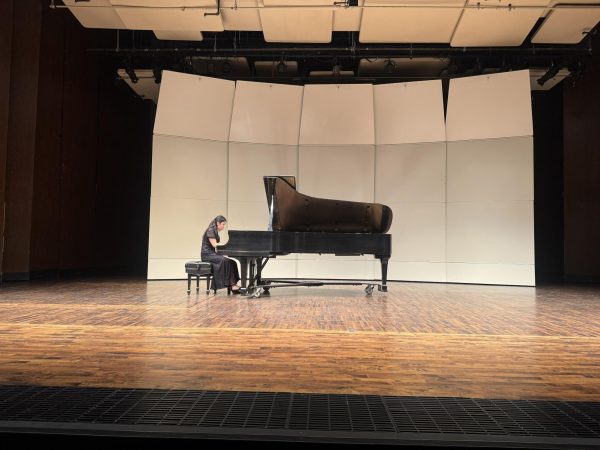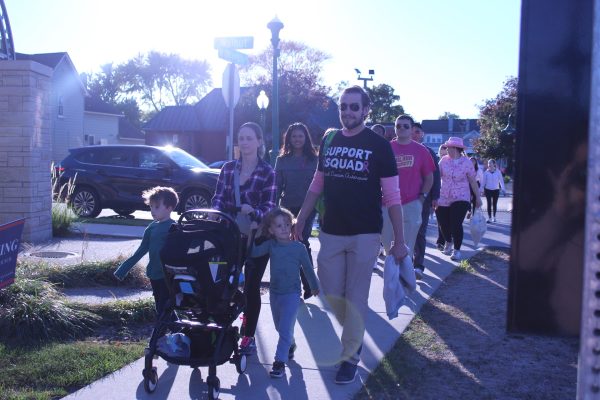Oakland professors reflect on the fall of the Berlin Wall
The fall of the Berlin Wall was something that most current OU students were not born to witness, but its historical impact is still being felt today.
The International Studies Program and the department of political science brought a special event to the fireside lounge on Thursday, Nov. 6. Political science professors Paul Kubicek, Cristian Cantir Peter Trumbore and history professor Derek Hastings reflected on the fall during an hour-long discussion from noon to 1 p.m.
It has been 25 years since the Berlin Wall that separated western and eastern Germany has fallen. Although many students have some insight on what exactly the Berlin Wall was, they may not know the direct impact of the fall of the wall and what this change meant for those affected by it.
The first portion of the discussion focused on a German perspective. Professor Hastings talked about the erection of the wall as well as the aftermath from the fall.
During the early years of the Cold War eastern Germans fled to west Germany to escape. The Berlin Wall was built overnight by the communist east German authorities to keep eastern Germans out of the west. This separated the eastern communists and western capitalists.
The wall remained strong for 28 years until the eastern communist government became weak. On the evening of Nov. 9, 1989, an announcement was made that citizens of both eastern and western Germany were allowed to cross the wall. This submerged two different worlds.
Not only did the wall physically come down, but it came down mentally as well. After the fall of the wall Germans were expected to come together as one after being separated for so many years.
“In a positive sense this was a shattering event that happened but there are still significant faults in present day Germany,” Hastings said.
During the next part of the discussion professor Cantir gave insight to an Eastern Europe perspective and the post Soviet world. He covered topics such as the violence on the eastern side of the wall to keep people in, military defense and Russian influence.
One of the main points that were made during this portion was that even though the original wall had fallen, it might not be the end for the idea.
“The fall greatly impacted a lot of eastern European countries,” Cantir said. “There is talk about an immergence of a new Berlin Wall that would be imposed at the border of Romania and Poland.”
Next, professor Trumbore closed the discussion talking about what the wall meant in terms of the Cold War. Many questions arise when talking about the Cold War just as it does with every other aspect of the Berlin wall.
“This leaves us with where we started, and that is what is different since 1989,” said Trumbore. “The answer to this is everything.”
How well do you know the Wall?
- The west side of the wall was covered in graffiti, but the east was not.
- People on the west side of the wall used the east side as their own personal dumpster. Whenever they had something to throw away they would throw it over the wall.
- David Hassellhoff performed his hit single “Looking For Freedom” while standing on top of the wall.
- When the wall came down parts of it were chipped away by Germans to sell on eBay or keep as a personal souvenir.
- People were not even allowed to travel from one side of the wall to the other even from underground. There were different subways for the east and west side.
- Over 100,000 citizens of the German Democratic Republic (GDR) tried to escape across the Berlin Wall, and more than 600 of them were shot and killed by guards or died in other ways such as drowning or killing themselves after being caught.
- The wall stretched 28 miles.
- Wires and mines were hidden underneath the wall to prevent people from escaping.
- It was 11-13 feet high.
- Between 5,000 and 10,000 people succeeded their escape.




